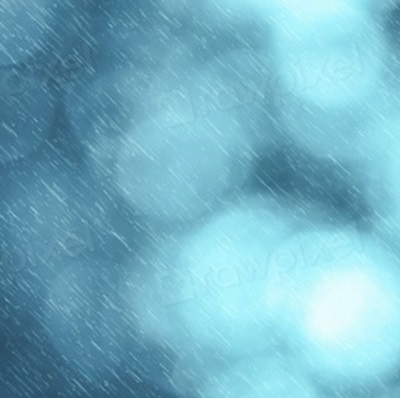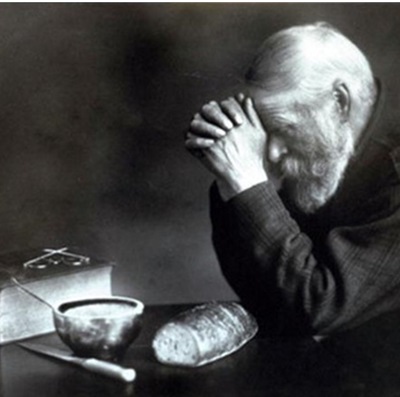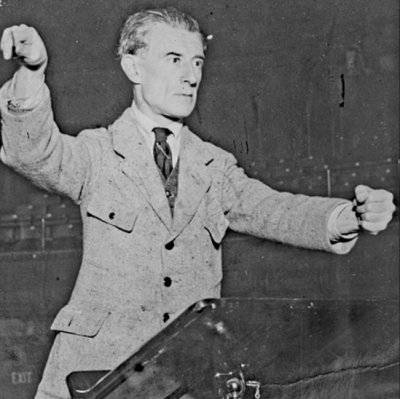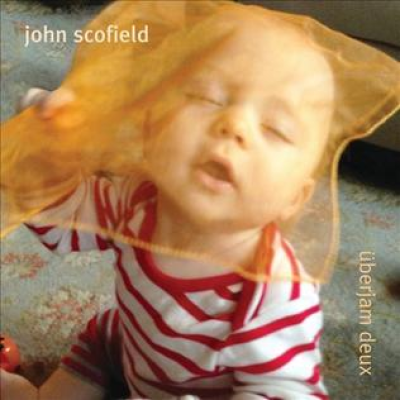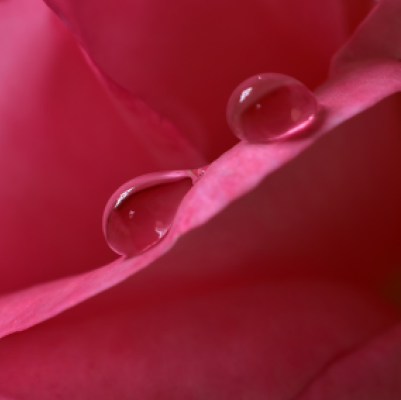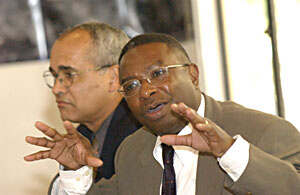
Horace Porter is the chair of African American World Studies and professor of English at the University of Iowa. He is the author of Stealing the Fire: The Art and Protest of James Baldwin and one of the editors of Call and Response: The Riverside Anthology of the African American Literary Tradition.
The first book to reassess Ralph Ellison after his death and the posthumous publication of Juneteenth, his second novel, Jazz Country: Ralph Ellison in America explores Ellison’s writings and views on American culture through the lens of jazz music.
In Jazz Country, Porter addresses Ellison’s jazz background, including his essays and comments about jazz musicians such as Louis Armstrong, Duke Ellington, and Charlie Parker. Porter further examines the influences of Ellington and Armstrong as sources of the writer’s personal and artistic inspiration and highlights the significance of Ellison’s camaraderie with two African American friends and fellow jazz fans — the writer Albert Murray and the painter Romare Bearden.
We welcome Horace to <I>The Ralph Ellison Project.</I> In an interview with <I>Jerry Jazz Musician</I> publisher Joe Maita, Porter discusses Ellington and Armstrong’s impact on Ellison and our culture, Charlie Parker’s art as viewed by Ellison, the painter Romare Bearden, and Ellison’s characterization of Harlem.
____________________
I suspect that the one body of music which expresses the United States
which expresses this continent
is jazz and blues.
Ralph Ellison
__________
JJM Who was your childhood hero?
HP I grew up in Georgia around the time of the heyday of Dr. Martin Luther King, so I would say King and John Kennedy were my heroes. I also identified with Roger Maris and Jim Brown, but if I were to choose a national figure, I think it would be Dr. King.
JJM How old are you?
HP I will be 52 in September.
JJM Did you participate in any of the marches from that era?
HP I wasn’t quite old enough. Dr. King died when I was a senior in high school. While I didn’t participate, I was very well aware of his significance because everybody talked about the civil rights movement all the time. Kennedy and King were heroic figures. Growing up as a black southerner, you were always thinking about the end of segregation in all of its forms, so anybody who seemed to suggest they were going to bring it to an end and was actually doing something about it was someone you identified with.
JJMPeople’s heroes tell a lot about somebody. In your book you mentioned Ralph Ellison’s own heroes a couple of times, among them Duke Ellington and Louis Armstrong. How did Ellington and Armstrong serve as artistic inspiration to Ellison?
HP Ellison grew up in Oklahoma City, in the frontier-state of Oklahoma. He points out that while the reputation of Oklahoma is that of it being a far-flung, deprived place, it actually had a rich musical and cultural tradition. It was home to all kinds of people you wouldn’t necessarily expect. He was therefore exposed to a lot of culture there, including appearances by both Armstrong and Ellington. He saw them very early, and recognized them as being magnificent figures. Ellison talks about the magnificence of Ellington’s orchestra — the way that the performers were dressed and how they carried themselves on stage. The music and some of the great wide world was brought there. Ellison said that when Armstrong came to Oklahoma City, it was the first time he came to what ordinarily would have been a segregated black venue and saw white teenage girls in the audience. He thought that was evidence of Armstrong’s magnificence. He attracted all of these teenagers who were willing to potentially break the law and come across the cultural boundary line to hear this music, because they thought it was their music too. Ellison started playing trumpet early, and had the aspiration of going to Tuskeegee and becoming a classical composer. So, it was for these reasons, among others, that Armstrong and Ellington were heroes to Ellison.
JJM One doesn’t always think of Oklahoma as being culturally rich. If you dig a little deeper, you discover it was a really dynamic part of America.
HP It was, yes. I might add that specifically in relationship to jazz, there were two other figures who were also influential in Ellison’s life. The jazz guitarist Charlie Christian was a boyhood friend, and the singer Jimmy Rushing, “Mr. 5 x 5,” who Ellison knew as a boy. He was older than Ellison, so he was already a kind of local hero, at least. But then he became famous nationally. Even after Ellison went to New York and became famous himself, they kept in contact as sort of displaced Oklahomans in New York City.
JJM You mentioned two separate experiences Ellison had when he saw Ellington and Armstrong. Would you say that these were the first experiences he had of witnessing jazz making an impact on the image Americans had of themselves?
HP In one sense, yes. Ellison felt their music was speaking to all Americans, and it was indigenous, definitive American music and that somehow in their creations spoke of what it meant to be an American — whether black American or an American in general. The vision of the music and the creation of it caught what it meant to be an American. It was not as though he had not seen other musicians. He had seen King Oliver come through, as well as many of the blues singers — Clara Ward, for example. Somehow, though, Ellington and Armstrong seemed to present the most dramatic instances of creating a definitive American scene.
JJM And it was integrated
HP Yes.
JJM That must have been quite a sight for a young black man in Oklahoma.
HP Yes, he made a point of saying that.
JJM How did Ellison’s study of music teach him about writing fiction?
HP He got a scholarship to Tuskeegee Institute in Alabama to study with a composer named William Dawson, who was at that time, during the late 1920’s and early 1930’s, the premiere black classical musician in the country. He was also the head of the Tuskeegee music department. Ellison’s desire was to “write a symphony by the time he was 25, like Wagner.” Ellison played trumpet and was the bandleader of the jazz band at Tuskeegee, but he was studying real music courses — harmony and things of that nature — the way music majors do. He was taught by a famous black American pianist, Hazel Harrison, who had studied briefly with Prokofiev in Germany. During this time he began reading a lot, including T.S. Eliot’s The Waste Land. In that it is said he heard something of what jazz musicians were doing with their music. He hadn’t given up his interest in playing music, but as he became increasingly literary, writing became an important interest. When he went to New York City around 1933, he met Langston Hughes, who then introduced him to Richard Wright. Wright asked him to write a review and then a story. Eventually, he started writing and saw that he had the talent to become a writer.
JJM What did Ellison mean when he described himself as a “custodian of American culture”?
HP Ellison was a firm believer in the promise of democracy and the sheer wonder of American life, with so much human diversity and inventiveness. He felt as a writer his challenge was to speak to that diversity and the unity and then capture it. So, he felt as a custodian of the culture it was his assignment to keep the record of the American culture as clear and accurate and complex as possible, and not to reduce it to some kind of stereotypical, journalistic version of what it really wasn’t. That was his job. To articulate the culture so other people could understand and appreciate it.
JJM Certainly not everyone agreed with that. He must have had a number of dissenters who felt he should have done something beyond being a custodian.
HP He would have seen “custodian” as a descriptive term that would mean more, I suppose, archivist or chronicler. He would see it as a high calling and not dutiful. He would see it as a duty but not as some kind of a perfunctory exercise or obligation that had to be done by just about anybody. He saw it as something very significant. But having said that, yes, there were people who felt or would say, “there he goes again talking about maintaining standards.” He got a lot of flack for that.
JJM You said in your book that according to Ellison artists are perpetually threatened with “chaos.” What was his definition of chaos as it related to art, and was his definition of chaos a source of some of the dissent toward his work felt by some of the other African American writers of that era?
HP It could be, but he used “chaos” as his generic term for all sorts of artistic disorder, social disorder and so forth. For example, he referred to Jimmy Rushing as “reducing the chaos of living to form.” That is to say, if you were a competent artist, whether you were a jazz musician like Louis Armstrong or Duke Ellington, or a painter like Romare Bearden or a very fine politician, you could make life “swing” by creating something out of this swirling chaos around us. In their creations, the artists could find an angle to develop the complexity of it, the tragic comic-nature of it, and reduce it to a form people could understand somewhat better. Chaos was synonymous with disorder, and it was the job of the artist, musician, painter or actor to interpret it and reduce it in a way for an audience to better understand — given back to them, as Emerson would say, with a kind of “alienated majesty.”
JJMDid he feel as though Charlie Parker refined his work into art, or that Parker’s work was chaotic?
HP There is a sense about Ellison that he only appreciated musicians like Ellington and Armstrong and had disparaging comments about bebop and people like Parker. But he wrote a very beautiful essay about Charlie Parker called, “On Bird, Bird-Watching and Jazz.” In that essay he takes us through one bird after another, speculating about whether or not Parker, whose nickname was “Bird,” was, for example, a gold finch or a canary. He talks a little bit about the history of the gold finch and canary, and about their songs. He finally gets onto mockingbirds, and he gives us extended commentary on their singing range during the night and day. He writes about their migration patterns, how they prefer the southern fixture, and how they also live and sing in New York. Then he writes about Parker’s extraordinary range as a musician, how he could play really high, and how he could play really low. He could do all these things as a virtuoso the way a mockingbird can imitate almost anything. But at the same time in the essay, he talked about Parker’s limitations as a person and the fact that he was quick to fight, and that he was extraordinarily generous with people to a fault. Sometimes Parker would be very tolerant with younger musicians, and other times blow them away with criticism. Ellison saw Parker as trying to disassociate himself from Louis Armstrong’s type of clowning, and, in his attempt to turn his back on all of that, he in effect turned himself into something other than what people came to see — not so much a great saxophone player, but “the world greatest junkie.”
JJM Parker is a cultural icon in a lot of negative ways.
HP Yes. I think in reading Ellison on Parker and others that people have mistaken Ellison’s view. They have taken his critical view Parker’s personality and mistaken it for it being a critique of his music, and there is some difference. He understood his music — after all, he was a trained musician himself. He was not just some writer who was coming in saying, “I like this piece of jazz, I don’t like this other piece of jazz.” Ellison felt that trying to split the artist and the entertainer was a false dichotomy. Whoever the artist is, to some degree he always has to be engaged with the audience. There is always an element of entertaining involved. Even when Armstrong was clowning around and wearing the most ridiculous costumes, he created a bright, magic sound with his trumpet and singing voice. It was somehow transcendent, so you had to appreciate that without getting bogged down or confused about the particular mask he wore at that moment, because he was still playing that magnificent music.
JJM Is it true that Ellison felt musicians like Parker were confused by Armstrong and failed to see the complexity of his persona?
HP I agree, that is his point of view.
JJM I have to say that many years ago, as a young fan of jazz, I wasn’t into Armstrong because he didn’t seem as cool as Miles and Coltrane and the musicians who seemed on the cutting edge of their day. I guess in retrospect that I was as confused by Armstrong as anybody.
HP certainly some of his movie roles are indeed very stereotypical roles, but the playing and singing are still magnificent.
JJM You write about how Harlem was one of Ellison’s favorite topics. How does he characterize Harlem, and how did his vision of it differentiate from James Baldwin’s image of it?
HP I think that if you look at the early James Baldwin, you see his depiction of Harlem as a place that is essentially down and out. He wrote an essay called “Harlem Ghetto,” and I don’t want to lock him into this position for all time because he wrote it in 1948 as a young man just starting out. He saw Harlem as a place of deprivation. There is urine in the hallways of the apartment buildings and so forth and so on. It is presented as a very bleak picture. What Ellison sees from the very beginning of his career, in an essay called “Harlem is Nowhere,” and throughout his career, is Harlem as a very complex American space where, of course you have the terrible suffering as you do in other urban areas, whether Harlem, Chicago or wherever. But he also talks about the “marvelous,” he talks about the style, the way that people are dressed, and what has been achieved — that you have these people who have migrated from the South and essentially moved to an urban environment where some of them lead complex lives. So, Ellison’s always looking at the complexity. In one of his essays on the painter Romare Bearden, he talks about how Bearden captures “the complexity of the slum dweller.” It is not just some one-dimensional thing where everybody is a ghetto-dweller, trapped in this web of circumstances that they can’t get out of it. That’s the thing about Ellison, he consistently talks about both the marvelous and the terrible. That’s always there, in the African-American experience as it is in human life.
Unlike a whole range of writers, particularly during the late 1960’s – – the various protest writers during that period who wanted to focus on strictly political issues concerning demographics and the denial of blacks of various opportunities — Ellison kept coming back to these issues of the grace of African-Americans: the beauty, the adoration of the Cadillac and the way certain people drove while driving a Cadillac, the whole idea of elegance, the way certain black ministers preached and carried themselves, the way certain prizefighters and athletes performed — let alone the jazz musicians who were sort of the walking personifications of elegance and of virtuosity. He was stressing these things to the point that sometimes people felt he went on a little too much about it. Harlem to him was all of that. It wasn’t just one thing — it wasn’t just a ghetto– it was a complex place that had some very beautiful things and some things that were ugly. His job as a “custodian” of American culture was to get it all in.
JJM Yes. He kind of connected improvisation to daily life, whether it be Harlem or anywhere. That was a very important theme for him; to take what you’re dealt and make the best of it and pull yourself above it. That attitude seems to be more popular now then before, as in the 1960’s and 1970’s, when the opposite point of view seemed more prominent. The political view seemed to be more important than living a life.
HP One of the reasons that I gave my book the title “Jazz Country” is because Ellison saw all of America as “jazz-shaped.” One of the main themes that he returns to in his writing is the idea of what he calls “the drama of democracy.” That is to stay democracy is a kind of play that is being acted out. It is not complete, and there are all of these improvisational moments based on various figures and moments of political contestation. You can think of the major documents like the Constitution or the Declaration of Independence as sort of a script from which we play these roles out. We improvise on them and there are amendments. African-Americans have been right at the heart of it from the very beginning even though they seem to be in an ambiguous position, where sometimes they seem to be outside of it. When you look right at it, African-Americans are right in the middle of the action.
JJM Ellison is a centerpiece to this very interesting philosophy that doesn’t get acknowledged very well in our country.
HP He is the centerpiece because he had a perception that he kept bringing up over and over again about what he calls the “unity in the diversity of American culture,” that we are all sort of woven together, that whites are culturally part black, and blacks are culturally part white. Most individuals, black and white, have been unwilling to fully embrace that idea and to understand exactly what he meant by it. So, that is something he consistently insisted upon in all of his writings, from the very beginning to the very end. There is certainly a casual acknowledgment of the fact that we are more or less a nation of immigrants, but it usually goes unacknowledged in the profound way that he meant it.
JJMOf all the books I have covered on Ellison, I think you did the best job discussing the relationship he had with the painter, Romare Bearden. What influence did Bearden have on Ellison?
HP First of all they were very good friends and they were both fans of jazz and they were both very literary. So, you have these men who sort of ran into each other at the same time, and one is becoming a writer and the other is starting off has a painter. They strike up this friendship and they become struggling artists, who share assumptions about what it means to be an artist and what it means to represent African-Americans in all their complexity. Also, Ellison has talked about how one artist served as an inspiration to the other in terms of the dedication to the craft of art, and what it means to be a dedicated artist. I think that as a friend and as an artist taking his own high standards of taste and learning from the great masters of the past, in some ways he and Ellison were speaking the same artistic, aesthetic language. They understood each other’s artistic vocabulary.
Romare Bearden’s “The Block”
JJM Did Bearden portray Harlem in paintings similarly to how Ellison portrayed it in literature?
HP Yes, he too portrayed it in complex terms. If you look at his painting called “The Block,” you will see a city block that has six panels, and on many of the buildings, the facade is cut away, so you are looking at the painting as though you are looking into a house. You see the front of the house with the walls removed, and you see the various activities going on inside the house, which means in one end you will see someone sitting at the table having a drink and in another someone taking a bath. That whole idea of showing the multi-faceted nature of human experience — even among the so-called slum dwellers — was what Ellison and Bearden were both dedicated to, not to reduce the humanity of African-Americans to stereotypes of victimization.
______________________________
Ralph Ellison in America
by
Horace A. Porter
________________________________
Ralph Ellison products at Amazon.com
Horace Porter products at Amazon.com
_______________________________
Interview took place on April 15, 2002
*
If you enjoyed this interview, you may want to read our interview with Richard Wright biographer Hazel Rowley.






